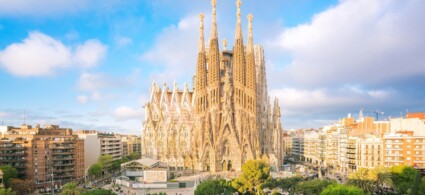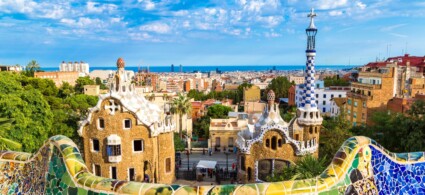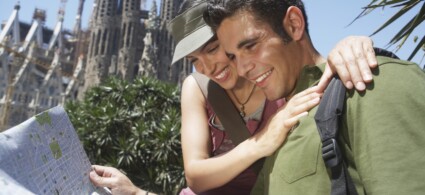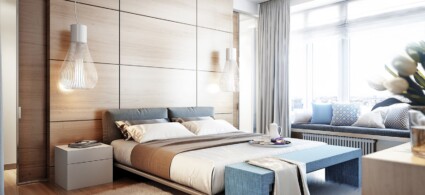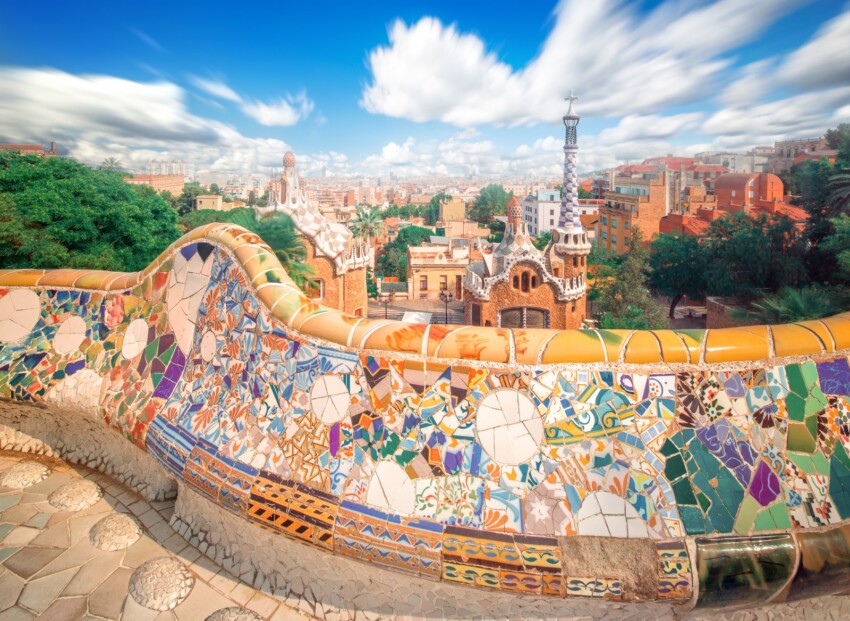

Barcelona is one of the few cities in the world that has made joie de vivre its hallmark. Colourful, bizarre, transgressive, for years it has been a destination for Italian tourists interested only in its legendary nightlife, one of the most exciting and electrifying in Europe.
But Barcelona is not only experienced at night: it is a splendid city, full of panoramic views, romantic corners, lush parks, streets and squares with an atmosphere of yesteryear. It is a city where men give roses and women books, friends and families get together to share the pleasure of good food, young professionals from start-ups and multinationals meet on the beach for an after-work drink.
Shaped by the imaginative modernist architecture of Gaudí and other brilliant artists in the early 20th century and returned to the forefront of the international tourist scene thanks to the 1992 Olympic Games, Barcelona is a city that has never ceased to excite, amaze and enamour anyone lucky enough to visit since. Treat yourself to a dream, an emotion at every step, the best holiday of your life. Give yourself Barcelona.
Barcelona is an exciting city with an impressive array of things to see and do. Here are the must-see attractions.
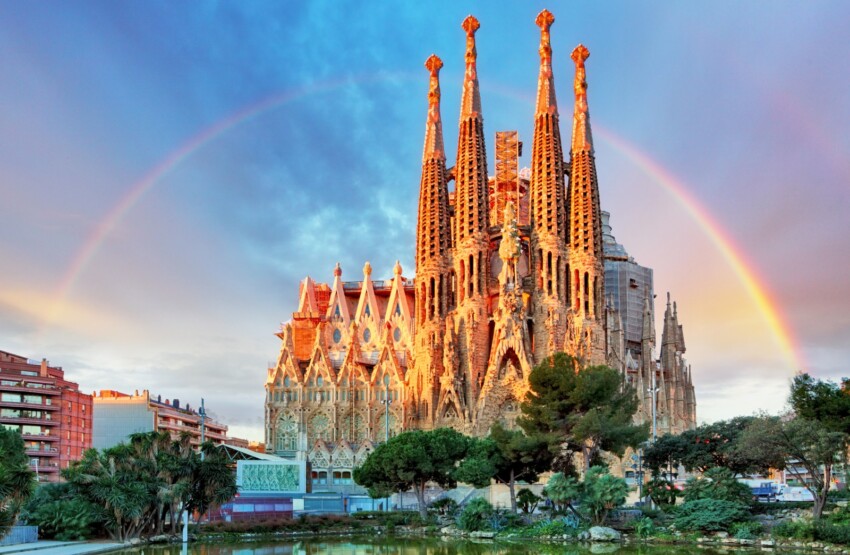
The Sagrada Familia is Barcelona’s tourist attraction par excellence and the most visited in Spain, attracting almost 5 million visitors every year. It is an extraordinary construction that is awe-inspiring if only because of its extraordinary vertical thrust and, just like the great medieval cathedrals, is still under construction more than a century after the foundation stone was laid.
The Temple of Atonement of the Holy Family was Antoni Gaudi‘s last great work, an obsession that absorbed him completely. When funds ran out, the artist financed the continuation of the work out of his own pocket and in the last years of his life made requests for money from anyone he considered a potential patron.
Gaudi’s design envisaged a sacred edifice 95 metres long, 60 metres wide, with a seating capacity of 13,000, a central tower rising 170 metres above the transept and 17 other towers 100 metres or more high. The 12 towers along the three façades represent the apostles and the remaining five the Virgin Mary and the four evangelists. Because of his famous aversion to straight lines that did not exist according to him in nature, Gaudí gave his towers curvilinear profiles inspired by the bizarre peaks of Montserrat, the sacred mountain that forms the backdrop to Barcelona.
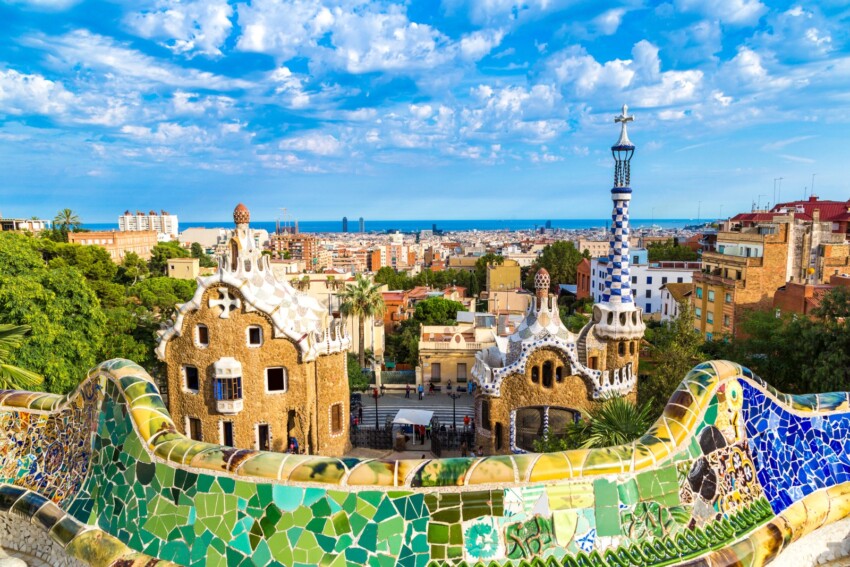
It is the place where Gaudí decided to try his hand at garden design. Parc Güell is both a strange and enchanting place. Here the architect was able to give free rein to his passion for natural forms.
It was realised in 1900, when Count Güell bought the hilly land covered with trees and entrusted Gaudí with the creation of a miniature city, intended for the residence of wealthy people, surrounded by English gardens. Commercially, the project turned out to be a total failure and was abandoned in 1914. In 1912, the city purchased the property for use as a public park.
One of the most photographed sculptures is the one on the steps of the entrance, on which a mosaic-designed dragon-lucifer rests. Among the most famous sights in the park is the so-called Doric Temple, a forest of 88 stone columns, some of them leaning like weathered trees. The most photographed are probably the two buildings at the entrance that resemble Hansel and Gretel’s little houses. The most striking scenic effect is created by a large space bordered by a very long ceramic-covered bench that sinuously follows the perimeter of the space.
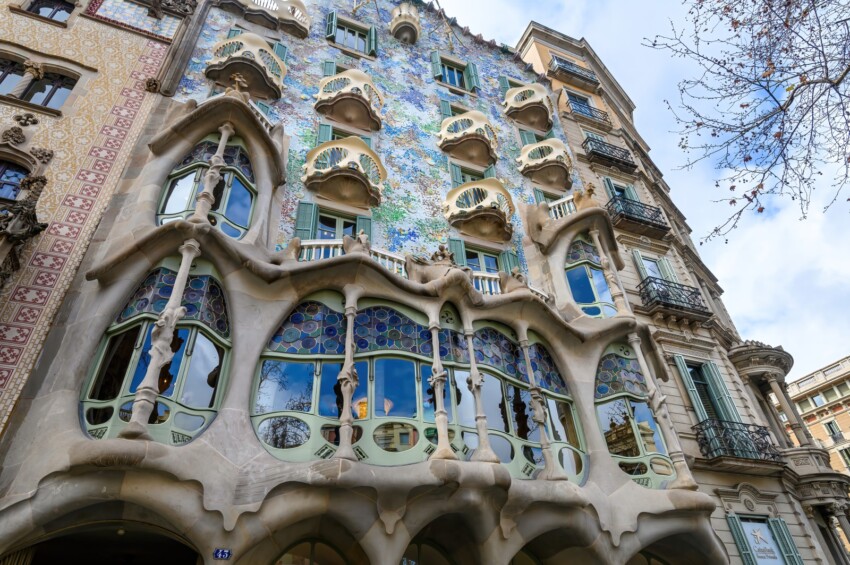
One of the most extravagant residential buildings in Europe looks like the fruit of a Gaudi hallucination and perhaps that is why it is so appealing. The façade, studded with fragments of blue, lilac and green tiles and interrupted by wave-shaped balconies and windows, culminates in an irregularly shaped roof covered with blue tiles topped by a slender turret.
Together with Casa Amatller and Casa Lleó in the block known by the joking name of Manzana de la Discordia, i.e., Pomo block of Discord, it is one of the most interesting examples of the eclecticism of Barcelona’s Modernist style.
Casa Batlló is also known as casa dels ossos (house of bones) and casa del drac (house of the dragon). The balconies look like the bony jaws of some strange animal and the flaky roof evokes the back of a dragon fighting St George.
Not to be missed is the attic, characterised by the hyperbolic arches typical of Gaudi’s style and its twisted tiled chimneys give the roof a surreal touch.
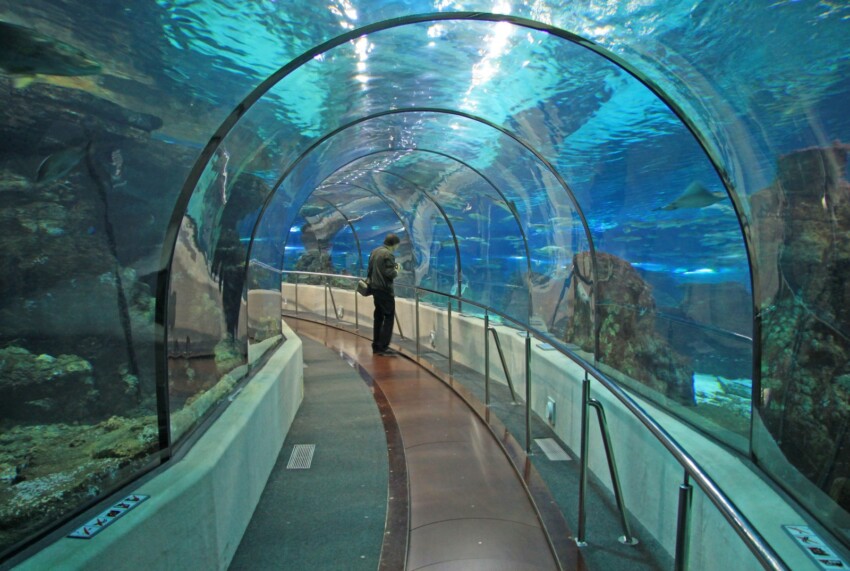
The 80-metre-long shark gallery is the main attraction of the Barcelona Aquarium, one of the largest in Europe. It boasts the best collection of fish in the Mediterranean and a large number of species from the Red Sea, the Caribbean and the Great Barrier Reef.
The shark tunnel is reached by passing a series of themed tanks containing seahorses, sharks, rays and sunfish. Those with a valid diving licence can dive in the main tank together with the sharks.
In total, the aquarium houses around 11,000 fish belonging to 450 different species.
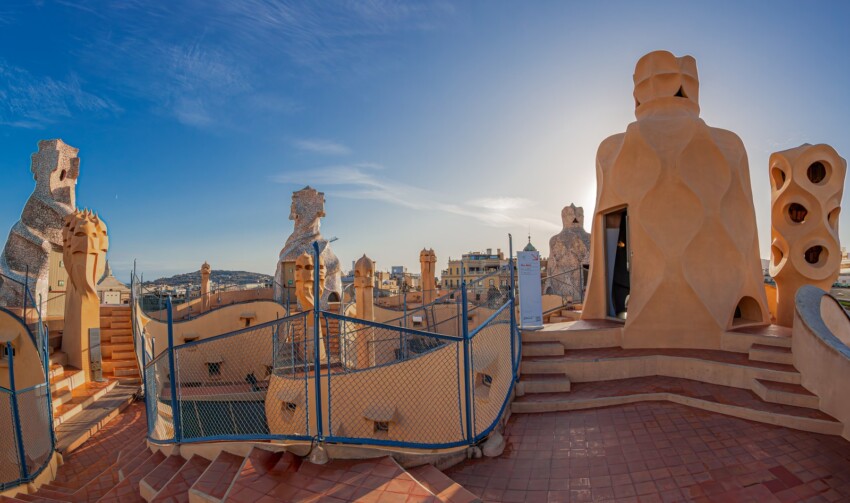
Casa Milà, better known as La Pedrera, is another visionary masterpiece by Gaudi. Constructed between 1905 and 1910 to house flats and offices, La Pedrera is a curvilinear building whose name derives from its animated grey stone façade that seems to ripple in small, light waves. The wave effect is emphasised by the presence of elegant and elaborate wrought-iron balconies.
The patron of the house, from whom it derives its name, was a businessman who had married an older and richer wife than himself and was one of the first inhabitants of the city to own a car, so much so that Gaudí designed an interior parking space for him. The aim of this building was to surpass in grandeur and luxury any other building in the area at the time.
The most extraordinary element is the roof, characterised by huge chimneys resembling medieval knights.
The first floor often hosts temporary art exhibitions, while the attic houses a small museum dedicated to Gaudi’s work.
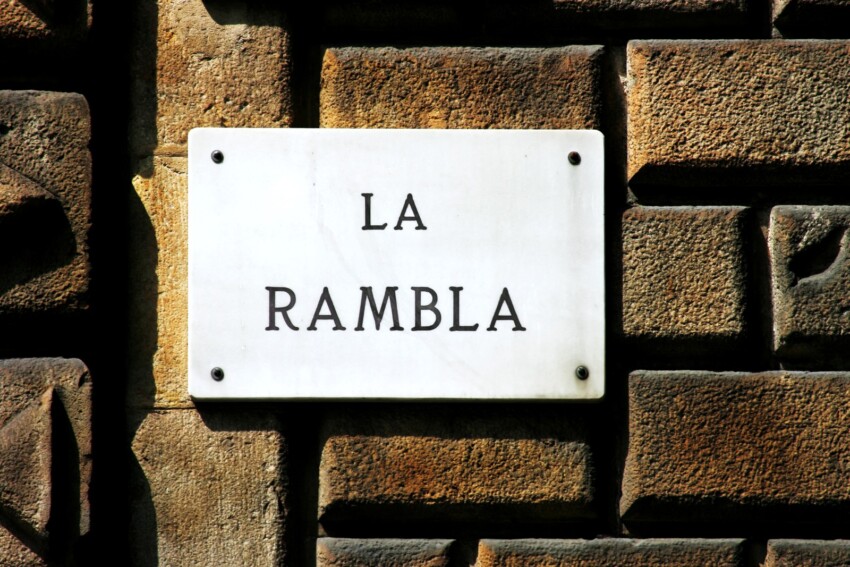
La Rambla is undoubtedly the best known boulevard in Spain. In a short stroll it offers a concentration of colour with bird cages, flower stalls, period buildings, a food market full of aromas, expensive beers, tourist souvenirs and a continuous parade of the most diverse people.
Once a river and sewer drain at the edge of medieval Barcelona, La Rambla still demarcates the southwest side of the Barrio Gotico, the heart of old Barcelona. Shaded by plane trees and flanked by narrow counter avenues where cars circulate, the central part of La Rambla is a wide pedestrian avenue where Spaniards and outsiders alike flock every day until the early hours.
The initial stretch from Plaza de Catalunya is known as La Rambla de Canaletes, named after an early 20th century drinking water fountain. The second section, La Rambla dels Estudis, is characterised by the chirping of the bird market. The Ralmba de Sant Josep is lined with colourful flower stalls. Finally, La Rambla dels Caputxins was historically frequented by the guild of potters who lived and worked in these parts.
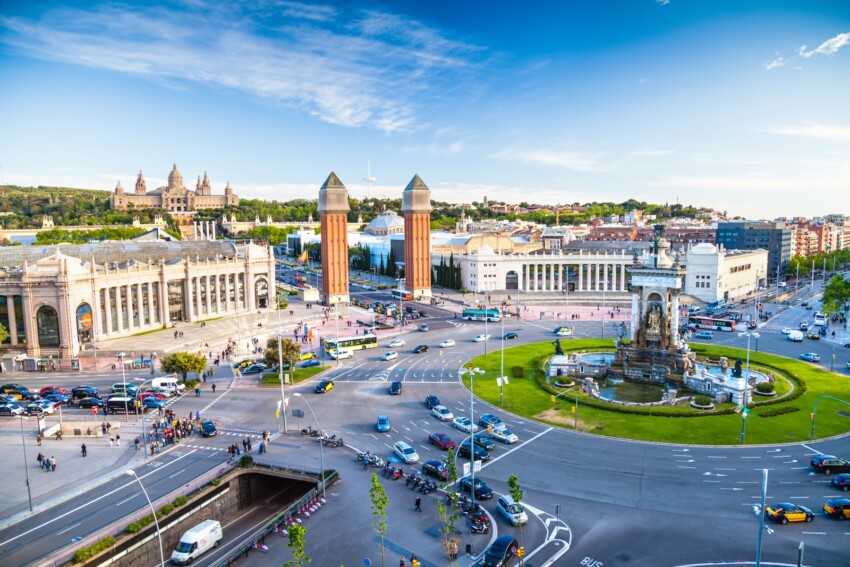
The roundabout of Plaza de España is immediately recognisable by its so-called Venetian towers, as they are vaguely reminiscent of St Mark’s bell tower.
Built for the 1929 World’s Fair, organised in Montjuïc, Plaza de España is bordered on the north side by the façade of the former Plaza de Braus Les Arenes, at the time of its construction in 1900 one of the three arenas of the city. Since bullfighting was banned in Catalonia in 2011, the bullring has been totally transformed into a new modern shopping centre.
Behind the bullring is the Parc de Joan Miró, created in the 1980s. The Avenida de la Reina Maria Cristina is flanked by two towers and extends to the Magic Fountain in front of the National Palace of Montjuic.
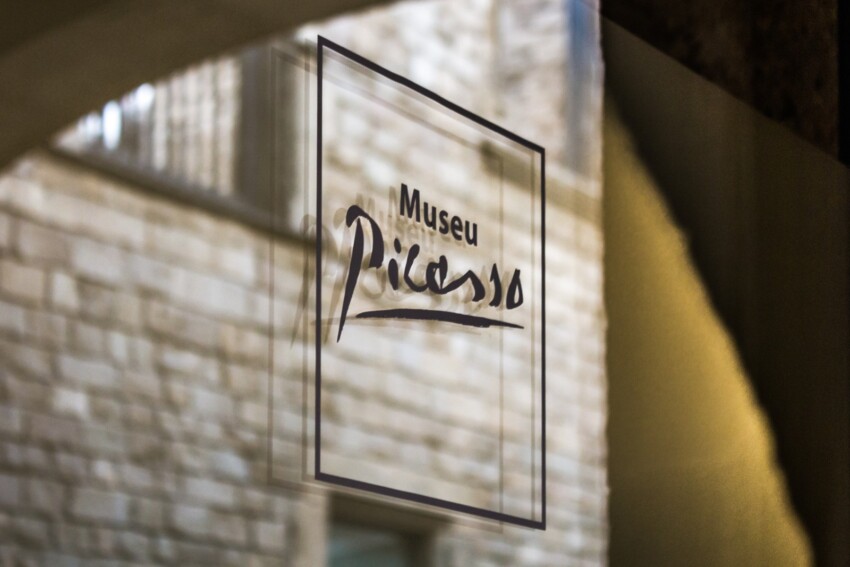
The Picasso Museum consists of five adjoining medieval-era buildings, which are worth the visit alone. The beautiful courtyards, galleries and stairways of the first three palaces are at least as valuable as the collection housed within them.
The exhibition focuses on Picasso’s formative years and comprises over 3,500 works. Although the museum focuses in particular on the artist’s activity up to 1904, it includes sufficient material to allow a thorough understanding of Picasso’s versatility and genius.
The permanent collection is exhibited in three buildings, Palau Aguilar, Palau del Barò de Castellet and Palau Meca, all from the 14th century. Casa Mauri, from the 18th century, and the adjacent Palau Finestres host temporary exhibitions.
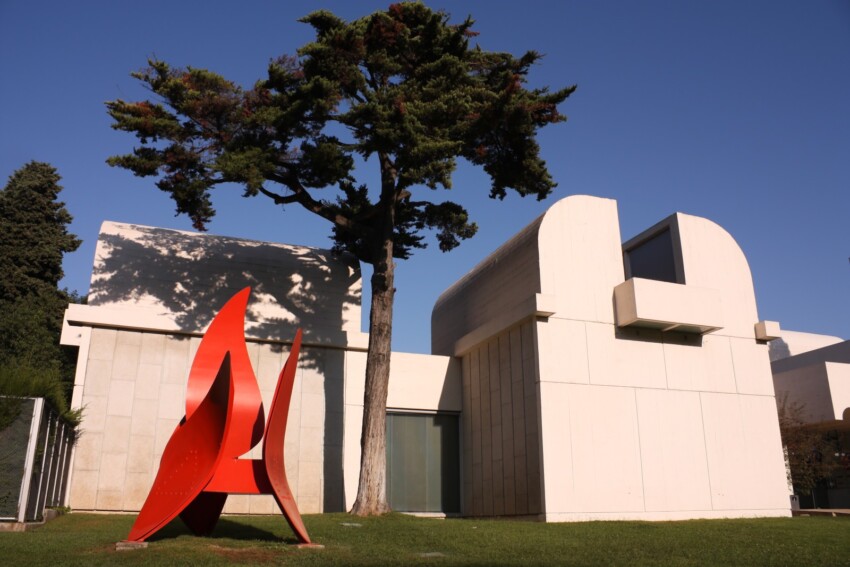
This dazzling white temple of art, dedicated to one of the masters of 20th-century Spanish art, stands out in a privileged position amidst the greenery of Montjuïc. Miró left this foundation to his hometown in 1971. The bright building is filled with important works by the artist, from his early sketches to the paintings of his last years.
The foundation houses the most comprehensive monographic collection of Miró’s works, with around 220 paintings, 180 sculptures, some textiles and more than 8,000 drawings made during his entire life. The exhibition is therefore perfect for gaining an insight into the artistic development of the Spanish artist.
The museum library houses Miró’s personal collection of books.
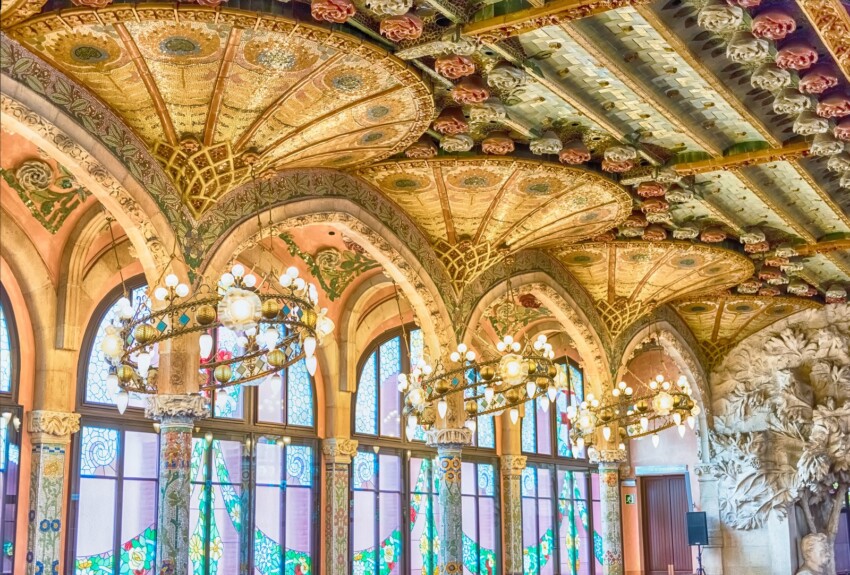
This concert hall is one of the greatest expressions of modernist architecture in Barcelona and has been declared a World Heritage Site. Built between 1905 and 1908 for the Orfeo Català musical society, with the collaboration of some of the leading Catalan artists of the time, it was conceived as a temple to the Catalan Renaissance.
Made of a series of tiles, bricks, carved stones and stained glass windows, the Palau de la Música Catalana shows much of its splendour on the outside. The main façade with its mosaics, capitals with floral motifs and cluster of sculptures representing Catalan popular music is a true masterpiece.
Among the various rooms, the auditorium on the upper floor stands out, a true riot of colour, surmounted by a glass skylight decorated in blue and gold with an inverted dome in the centre.
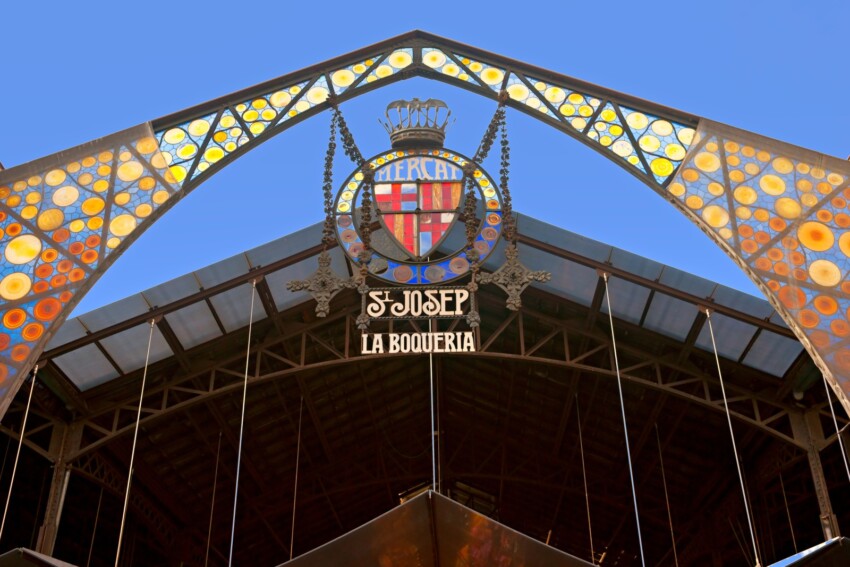
The markets in Barcelona are also modernist, but more than the beautiful building that houses it, it is the very special atmosphere inside that makes the Mercat de la Boqueria, the city’s most famous indoor market and one of the most visited attractions on Las Ramblas, so special.
It is a kaleidoscope of colours, scents, sounds, where Barcelonans shop for fresh quality produce and tourists take dozens and dozens of photos. The Boqueria market is also a great choice for a tasty snack of local delicacies.
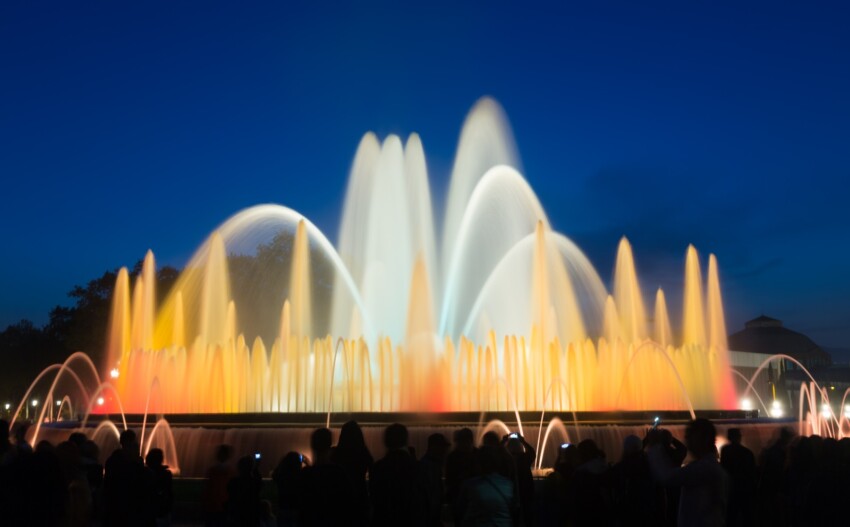
A magical spectacle is repeated every evening in Barcelona: in the wide Plaza de Espanya there is a huge elliptical fountain known as the magic fountain of Montjuic, which is illuminated at night and creates an exciting light and sound show. The water gushes out in time to music and seems to dance, with the lights creating an even more impressive scenic effect.
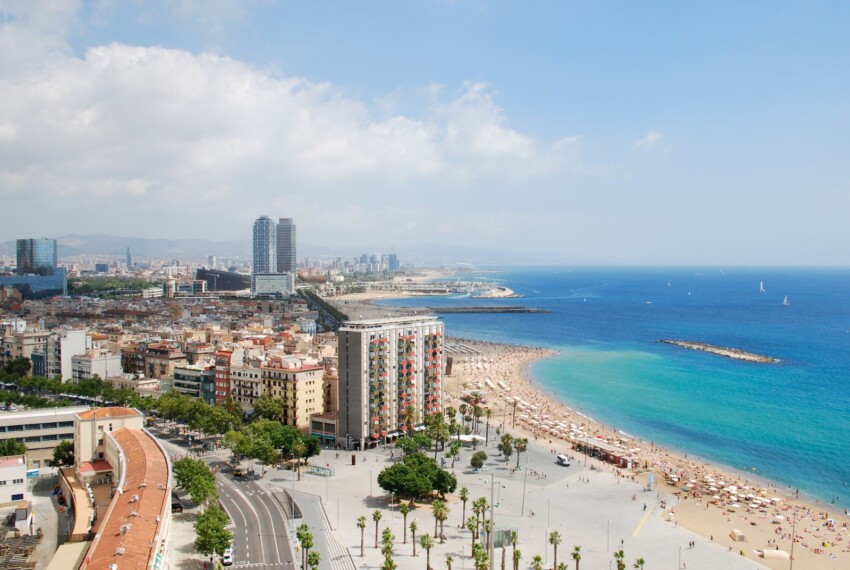
If there is one thing Madrileños have always envied the Barcelonians, it is the chance to take a dip in the sea after a day’s work. Barcelona’s city beaches, concentrated in the Barceloneta area, are easily reached by public transport.
Barcelona’s coastline is a succession of long, golden sandy beaches, perfect for a few hours of relaxation after visiting museums and monuments. The most famous and popular of these are Platja de Barceloneta, Platja de Sant Miquel and El Poblenou. Don’t leave the city without an aperitif at one of Barcelona’s legendary beachside chirinquitos.
In the following map you can see the location of the main places of interest mentioned in this article.
Discover Barcellona through the eyes of expert guides who will take you on a tour of the city's hidden treasures. Participating in a guided visit or a free tour will allow you to capture the true essence of Barcellona.
The free tours are a viable alternative to traditional guided tours. They work like this: participation is free and at the end of the visit you can leave a tip at your discretion. Below you will find our favourite free tour, otherwise you can see the full list by visiting this page.
Barcelona is one of Europe’s most visited cities and this has given rise to a strong hotel industry, with a wide choice of hotels and B&Bs in all price ranges.
With the metro, getting from one part of the city to another is quick and cheap, so the main tourist attractions are easily reached from any area. If you want to combine sightseeing with a bit of sea, we recommend looking for a hotel or b&b near Barceloneta.
Good news for low-cost travellers: due to the large number of young tourists who prefer Barcelona to other European cities, a large number of hostels have opened in the city, competing in price and quality. Many of these offer both dormitory beds and private rooms and are suitable for solo travellers as well as couples and groups of friends.
Famous for its vibrant nightlife, in Barcelona, fun has no timetable. From 9pm until 6am, the fun doesn’t stop for those with stamina. Bars, pubs and taverns are so numerous that curious night owls could go from one venue to the next for weeks, if not months, without entering the same place.
Most locals go out in the evenings from Thursday to Saturday, but thanks to the continuous presence of tourists, students and foreign residents, it is usually possible to find in the Barrio Gotico, in El Born and in El Raval open and crowded bars every night. In other areas frequented mainly by locals, the atmosphere remains quiet until Thursday.
Barcelona’s nightclubs come alive from 2 to 6 a.m. and the labyrinth of the old city hides a surprising number of different venues, from elegant former dance halls to alternative and undergorund haunts filled to capacity.
The best clubs by the sea can be found on the Barceloneta side, while a group of lesser-known nightclubs are scattered in the posher areas of the city, towards La Zona Alta. They are usually frequented by a wealthy clientele, while the city’s gay scene is mostly concentrated in the Eixample.
Among the most popular clubs are Otto Zuz, a three-storey disco frequented by beautiful people, Elephant, the hangout for models and wannabes and impeccable young men with a large dance floor, Sala Apolo where local bands and foreign musicians perform live, The One with a dance floor displaying the latest in lighting effects and video screens.
The La Barceloneta area has a chic character and, in the warmer months, takes on an almost Caribbean air. Here, trendy restaurants-lounge bars and nightclubs alternate. Nightclubs include Catwalk, which offers house music alternating from time to time with electronica, R&B, hip-hop and funk, Opium Mar right by the sea with house and techno music. Monasterio, on the other hand, offers live music, from jazz to blues, in a crowded basement venue.
The marina at Port Olìmpic is lined with rowdy bars, while the beach clubs are quieter. Razzmatazz is one of the classic places in town to go dancing and listen to live music, while Sala Mephisto is perfect for fans of heavy metal, gothic and hard-rock.
There are at least ten major events a day in Barcelona. It is a tireless and creative city, where fans of theatre, dance, music, cinema, visual arts, literature and other artistic disciplines will always find something to do.
The traditional festivals show that this city is not just about noise and nightlife: exciting, romantic and evocative, they are events not to be missed.
On 23 April, the feast day of San Jordi, the city is filled with stalls selling flowers and books: according to tradition, men give a rose to the woman they love and the woman gives the man a book. Another popular festival is 24 September, Festa Major de la Mercè, celebrated with dancing, music, food stalls and all kinds of events.
Barcelona’s music events are legendary, including the highly popular Primavera Sound, which takes place at the end of May, and Sonar, one of Europe’s most important electronic music festivals.
Barcelona is very easy to get to because it is connected by direct flights of low-cost airlines from numerous cities, in some cases only seasonal and in others operating all year round.
Besides the main airport in the city of Barcelona, you can also take a look at flights to Girona, which are often cheaper: from there you can reach Barcelona in about an hour by bus.
If you are already in Spain, you can reach Barcelona with a domestic flight, or trains and buses departing from all major Spanish locations.
The capital of Catalonia is also an ideal base for travelling with a rental car because it is located in the centre of an efficient motorway network. Valencia is only three and a half hours away, while getting to Madrid takes six, although you can easily break the journey with a stop in Zaragoza, located exactly halfway.
What's the weather at Barcelona? Below are the temperatures and the weather forecast at Barcelona for the next few days.
Barcelona, the capital of Catalonia, is located in the north-eastern part of Spain. It is the closest Spanish big city to the rest of Europe.
